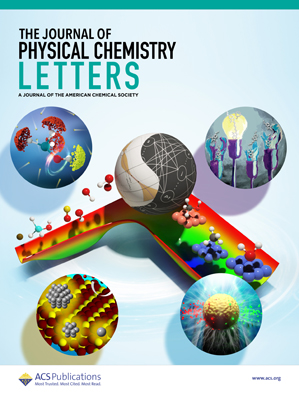Exploiting a Shortcoming of Coupled-Cluster Theory: The Extent of Non-Hermiticity as a Diagnostic Indicator of Computational Accuracy
IF 4.6
2区 化学
Q2 CHEMISTRY, PHYSICAL
引用次数: 0
Abstract
The fundamental non-Hermitian nature of the forms of the coupled-cluster (CC) theory widely used in quantum chemistry has usually been viewed as a negative, but the present paper shows how this can be used to an advantage. Specifically, the non-symmetric nature of the reduced one-particle density matrix (in the molecular orbital basis) is advocated as a diagnostic indicator of computational quality. In the limit of the full coupled-cluster theory [which is equivalent to full configuration interaction (FCI)], the electronic wave function and correlation energy are exact within a given one-particle basis set, and the symmetric character of the exact density matrix is recovered. The extent of the density matrix asymmetry is shown to provide a measure of “how difficult the problem is” (like the well-known T1 diagnostic), but its variation with the level of theory also gives information about “how well this particular method works”, irrespective of the difficulty of the problem at hand. The proposed diagnostic is described and applied to a select group of small molecules, and an example of its overall utility for the practicing quantum chemist is illustrated through its application to the beryllium dimer (Be2). Future application of this idea to excited states, open-shell systems, and symmetry-breaking problems and an extension of the method to the two-particle density are then proposed.

利用耦合聚类理论的缺点:非厄米性程度作为计算精度的诊断指标
在量子化学中广泛使用的耦合簇(CC)理论的基本形式的非厄米性质通常被视为负面的,但本论文展示了如何将其用于优势。具体而言,主张将简化后的单粒子密度矩阵(以分子轨道为基础)的非对称性作为计算质量的诊断指标。在完全耦合-簇理论的极限下,电子波函数和相关能在给定的单粒子基集中是精确的,并且精确密度矩阵的对称特征被恢复。密度矩阵不对称的程度可以用来衡量“问题有多困难”(就像众所周知的T1诊断),但它随理论水平的变化也可以提供“这种特殊方法的效果如何”的信息,而不管手头问题的难度如何。所提出的诊断被描述并应用于一组选定的小分子,并通过其应用于铍二聚体(Be2)来说明其对实践量子化学家的总体效用的一个例子。然后提出了这一思想在激发态、开壳系统和对称破缺问题上的未来应用,并将该方法推广到双粒子密度。
本文章由计算机程序翻译,如有差异,请以英文原文为准。
求助全文
约1分钟内获得全文
求助全文
来源期刊

The Journal of Physical Chemistry Letters
CHEMISTRY, PHYSICAL-NANOSCIENCE & NANOTECHNOLOGY
CiteScore
9.60
自引率
7.00%
发文量
1519
审稿时长
1.6 months
期刊介绍:
The Journal of Physical Chemistry (JPC) Letters is devoted to reporting new and original experimental and theoretical basic research of interest to physical chemists, biophysical chemists, chemical physicists, physicists, material scientists, and engineers. An important criterion for acceptance is that the paper reports a significant scientific advance and/or physical insight such that rapid publication is essential. Two issues of JPC Letters are published each month.
 求助内容:
求助内容: 应助结果提醒方式:
应助结果提醒方式:


